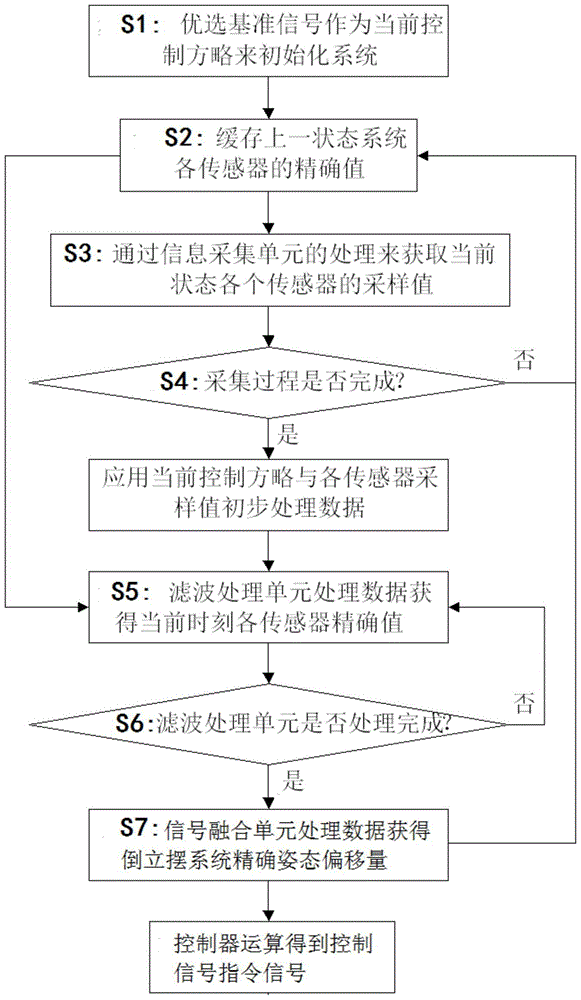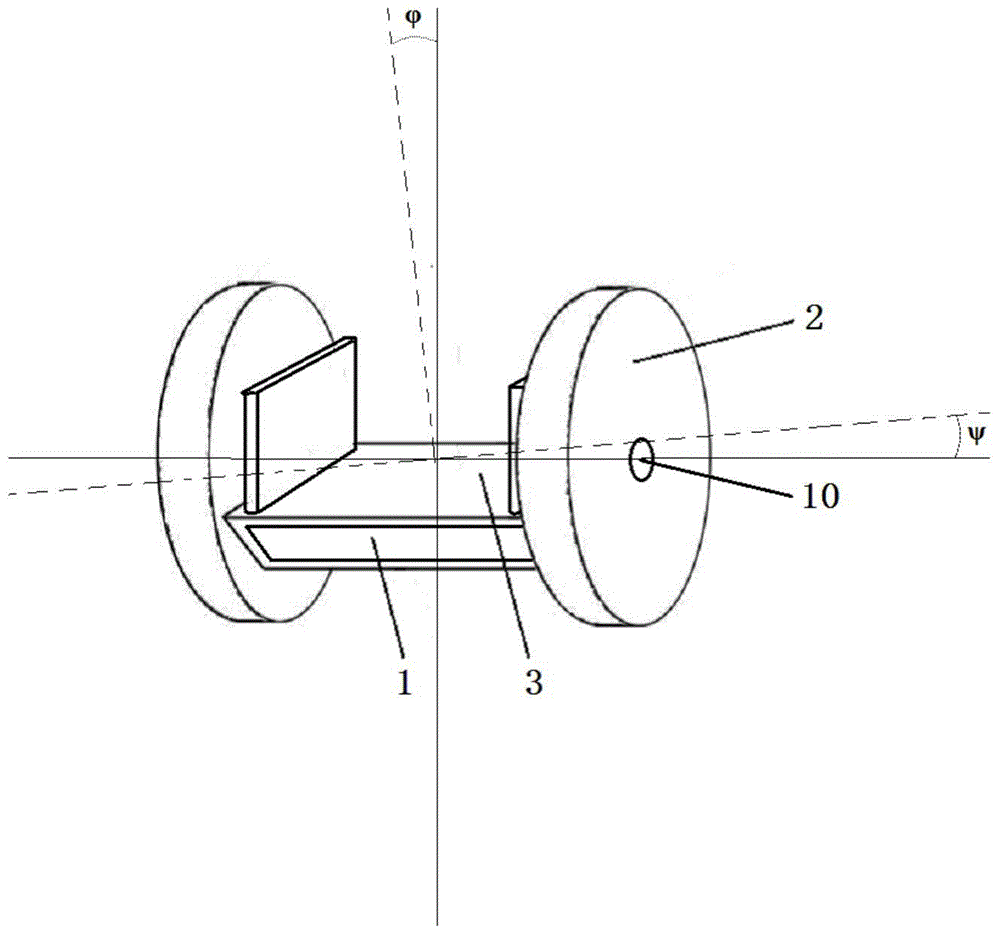Signal processing method for control of sporty inverted pendulum system and signal control system for intelligent self-balancing vehicle
A signal processing and inverted pendulum technology, applied in general control systems, attitude control, adaptive control, etc., can solve the problems of insufficient compact structure, complex control strategies, and inability to overcome the lack of components.
- Summary
- Abstract
- Description
- Claims
- Application Information
AI Technical Summary
Problems solved by technology
Method used
Image
Examples
Embodiment 1
[0058] In this example, see Figure 1 ~ Figure 3 , the signal control system of the intelligent self-balancing vehicle, mainly includes the power supply system 9, the signal acquisition subsystem 5, the signal finishing subsystem 6, the signal processing subsystem 7 and the control system 8, which will be used as the signal detection of the pendulum of the sports inverted pendulum system As a result, as the controlled parameter of the controlled vehicle frame body 1, the control signal is applied to the controlled wheel 2 according to the predetermined target, so that by driving the two wheels 2, the control of the balanced and stable state of the vehicle frame body 1 is realized. Closed-loop control, the power supply system 9 supplies power to each system and electronic device, and it is characterized in that: the signal acquisition subsystem 5 includes a gyroscope 11, an accelerometer 12, a HALL sensor 13 and an AD conversion acquisition control chip 14, and the signal acquis...
Embodiment 2
[0078] This embodiment is basically the same as Embodiment 1, especially in that:
[0079] In this example, see Figure 4 with Figure 5, as the single-wheel intelligent self-balancing vehicle of the detection and control target of the intelligent self-balancing vehicle in this embodiment, its wheel 2 is arranged at the middle position of the vehicle frame platform 3, and the vehicle frame platform 3 is respectively located on the left and right sides of the wheel 2 In addition, an inertial element is provided to maintain the left and right balance of the wheel 2. The inertial element is rotatably connected to the frame body 1 through a mandrel, and the mandrel of the inertial element is parallel to the axis of the wheel axle 10. The mandrel is driven by a drive motor 18 The control system 8 controls the in-wheel motor 4 to drive the wheel 2 to rotate forward or reversely, and controls the rotation speed of the driving motor 18 to regulate the high-speed rotation of the inert...
Embodiment 3
[0081] This embodiment is basically the same as Embodiment 1, especially in that:
[0082] In this embodiment, as the two-wheeled intelligent self-balancing vehicle of the detection and control target of the intelligent self-balancing vehicle in this embodiment, each wheel 2 is separately equipped with an inertial element that maintains the left and right balance of the corresponding wheel 2, and the inertial element passes through the mandrel It is rotatably connected with the frame body 1, and the mandrel of the inertial element is parallel to the axis of the corresponding wheel axle 10. The mandrel is driven by the driving motor 18, which then drives the inertial element to rotate at high speed. The control system 8 controls the rotation of the driving motor 18 The speed is used to control the high-speed rotation of the inertial element to generate the moment of inertia, which constrains the left and right deflection of the wheel 2 . In the present invention, each wheel 2 i...
PUM
 Login to View More
Login to View More Abstract
Description
Claims
Application Information
 Login to View More
Login to View More - R&D
- Intellectual Property
- Life Sciences
- Materials
- Tech Scout
- Unparalleled Data Quality
- Higher Quality Content
- 60% Fewer Hallucinations
Browse by: Latest US Patents, China's latest patents, Technical Efficacy Thesaurus, Application Domain, Technology Topic, Popular Technical Reports.
© 2025 PatSnap. All rights reserved.Legal|Privacy policy|Modern Slavery Act Transparency Statement|Sitemap|About US| Contact US: help@patsnap.com



